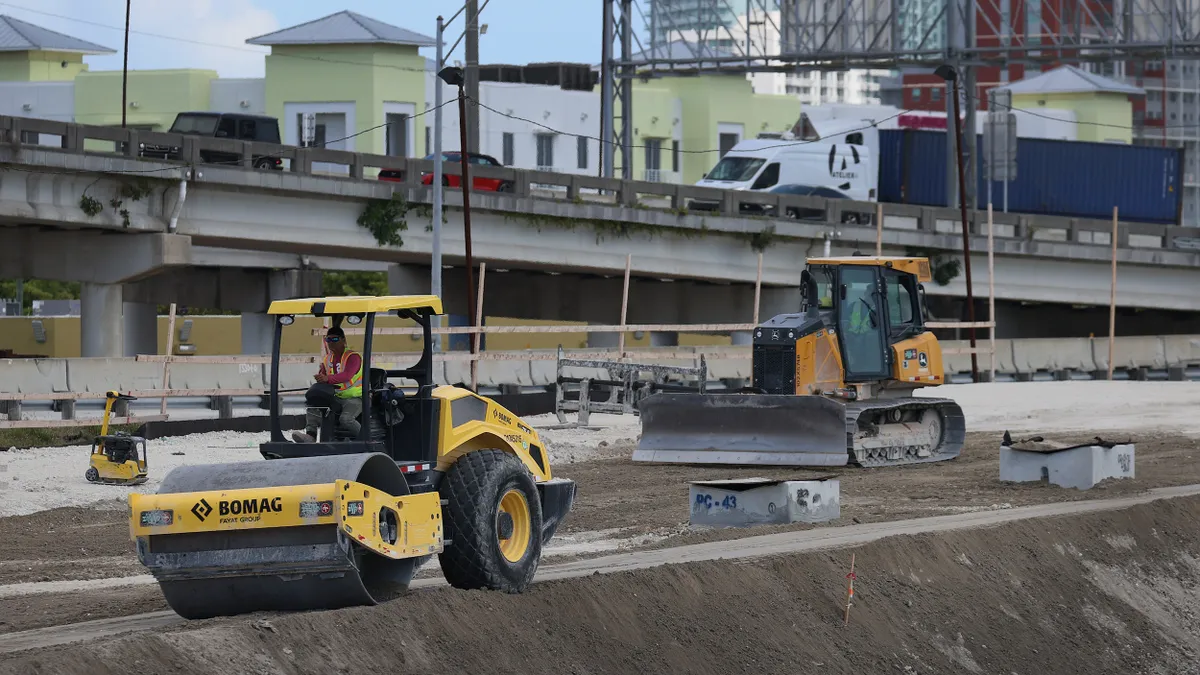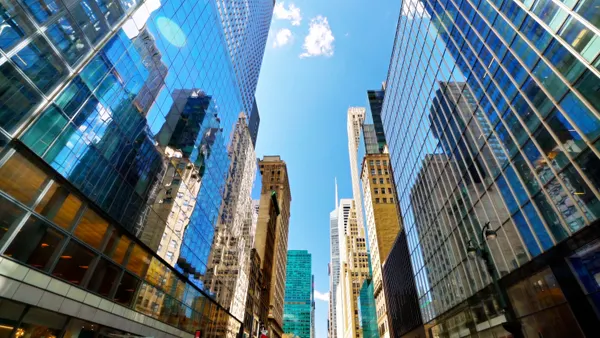Dive Brief:
- The 2021 infrastructure law’s historic $643 billion, five-year investment in transportation could end up adding the equivalent of 77 million more cumulative metric tonnes of carbon emissions by 2040, compared with projected baseline levels without the Biden-era program, according to an analysis by Transportation for America released Nov. 14.
- The report analyzed over 64,000 federal Infrastructure Investment and Jobs Act grants and found that more than $37 billion has gone to new or widened highways through the National Highway Performance program, which provides funds to states as a lump sum according to a formula contained in law.
- With states and their transportation departments having wide discretion on how to spend these formula funds, their decisions influence transportation emissions. But which states are increasing or reducing emissions through these grants may surprise some, as road-building is often tied to population growth, the researchers said.
Dive Insight:
The White House celebrated the three-year anniversary of the infrastructure law in a Nov. 15 statement, noting that it has funded over 11,400 bridge repair projects and improvements to over 196,000 miles of roads. A majority of these projects were on states’ long-range plans well before the IIJA came into effect, said Corrigan Salerno, policy manager for Transportation for America and lead researcher on the report. “Because it was such a large glut of funding, [states] were able to send over money to those large expansion projects that have been just waiting for funds,” he said.
Texas and Florida were the top two states whose projects could lead to a net increase in CO2 emissions, according to the report. But that’s because both states are seeing large population growth, Salerno said. California, despite its many climate investment programs, ranks sixth among the states expected to grow its carbon emissions from the IIJA program. “California is actually one of the top investors in emissions-reducing projects, but for all their investments in emissions reduction in the climate, you're undoing it with these highway expansions,” Salerno said.
Conversely, rural states including Montana, North Dakota, South Dakota and Wyoming are expected to lower their transportation carbon emissions compared with the no-IIJA baseline by 2040. These states see less projected demand for new or expanded highways, leading to less investment in these projects, Salerno explained.
The report also says that “rural counties are not the problem.” Urban counties and urbanized states are expected to be the heavyweights when it comes to projected emissions increases. “When we think about highway expansion, it's not just the highway that you're building,” Salerno said. “What you're doing is accommodating a car-centric way of life.”
How will the incoming Trump administration prioritize federal transportation spending? “If the new administration follows a similar approach as [they did] during their first term, U.S. DOT will likely prioritize highway expansion, potentially sidelining critically needed investments in transit, maintenance, and alternative transportation options,” said Transportation for America Director Beth Osborne in an emailed statement.












